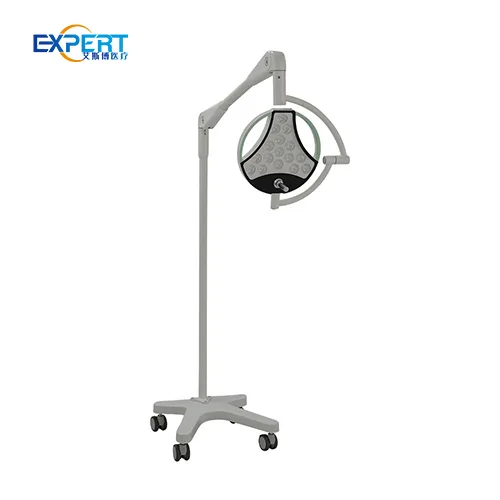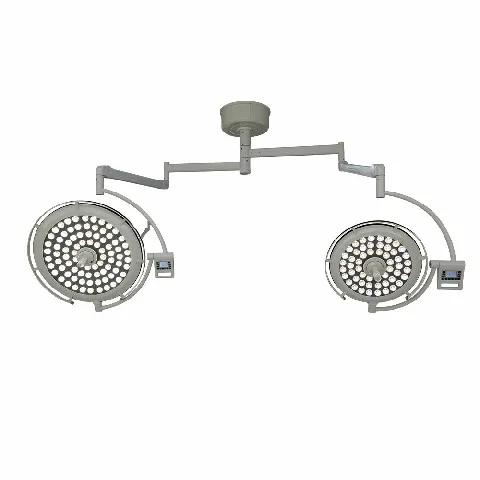Indirizzo
304 Il cardinale nord S.
Dorchester Center, MA 02124
Ore di lavoro
Dal lunedì al venerdì: 7:00 - 19:00
Fine settimana: 10:00 - 17:00
Indirizzo
304 Il cardinale nord S.
Dorchester Center, MA 02124
Ore di lavoro
Dal lunedì al venerdì: 7:00 - 19:00
Fine settimana: 10:00 - 17:00

I sistemi di telecamere con luce chirurgica hanno rivoluzionato il modo in cui vengono eseguiti gli interventi chirurgici. Questi sistemi combinano un'illuminazione ad alta intensità con funzionalità di imaging avanzate, fornendo ai chirurghi una visione chiara e ingrandita del sito chirurgico.
I sistemi di telecamere con luce chirurgica hanno rivoluzionato il modo in cui vengono eseguiti gli interventi chirurgici. Questi sistemi combinano un'illuminazione ad alta intensità con funzionalità di imaging avanzate, offrendo ai chirurghi una visione chiara e ingrandita del sito chirurgico. Questa guida si propone di aiutare gli operatori sanitari e i facility manager a prendere una decisione consapevole nella scelta del sistema di telecamere con luce chirurgica più adatto alle loro esigenze.

Un sistema di telecamere con luce chirurgica combina un'illuminazione chirurgica di alta qualità con telecamere integrate. Questo sistema migliora la visibilità e registra le procedure chirurgiche in alta definizione. Questi sistemi sono fondamentali per la documentazione, la formazione e il monitoraggio in tempo reale, offrendo una visione senza ostacoli del sito chirurgico e mantenendo al contempo condizioni di illuminazione ottimali.
I sistemi di telecamere con luce chirurgica comprendono una gamma di componenti che lavorano insieme per offrire eccezionali capacità di illuminazione e imaging:
Lampada chirurgica: Una lampada chirurgica ad alta intensità illumina il campo chirurgico senza ombre, garantendo al chirurgo una visibilità ottimale.
Sistema di telecamere: Una telecamera ad alta risoluzione cattura immagini e video della procedura, offrendo ai chirurghi una visione ingrandita del campo chirurgico.
Integrazione e controllo: Il sistema si integra perfettamente con le apparecchiature chirurgiche esistenti, consentendo un controllo intuitivo delle funzioni di illuminazione e di imaging.
Visualizzazione delle immagini: Un monitor ad alta definizione mostra le riprese chirurgiche in diretta, consentendo al chirurgo e all'équipe chirurgica di visualizzare la procedura in tempo reale.
Registrazione e archiviazione: Il sistema consente la registrazione e l'archiviazione dei filmati chirurgici, offrendo una risorsa preziosa per scopi di documentazione e formazione.
| Caratteristica | Descrizione |
|---|---|
| Intensità di illuminazione | La luminosità della lampada chirurgica, misurata in lux o footcandle. |
| Risoluzione dell'immagine | La nitidezza e il dettaglio delle immagini e dei video acquisiti, misurati in megapixel. |
| Risoluzione video | La frequenza dei fotogrammi e la risoluzione delle riprese chirurgiche in diretta. |
| Campo visivo | Estensione del campo chirurgico ripreso dalla telecamera. |
| Capacità di zoom | Possibilità di ingrandire il campo chirurgico per una visione ravvicinata. |
| Integrazione con le apparecchiature esistenti | La compatibilità del sistema con altre apparecchiature chirurgiche, come microscopi ed endoscopi. |
| Opzioni di visualizzazione delle immagini | Dimensioni e risoluzione del monitor utilizzato per visualizzare le riprese chirurgiche. |
| Opzioni di registrazione e archiviazione | La possibilità di registrare e archiviare filmati chirurgici in vari formati. |









I sistemi di telecamere con luce chirurgica trovano diverse applicazioni in varie specialità chirurgiche:
La scelta del sistema di telecamere per luce chirurgica più adatto richiede una valutazione delle esigenze specifiche, del budget e delle funzionalità offerte dai diversi sistemi. Ecco alcuni passaggi per guidarvi nel processo di selezione.
Considerate i tipi di interventi chirurgici eseguiti nella vostra sala operatoria, le dimensioni dell'équipe chirurgica e gli eventuali requisiti specifici in termini di illuminazione e registrazione.
Determina il tuo budget, tenendo presente che investire in un sistema di alta qualità può portare a risultati migliori e potenzialmente a costi più bassi nel lungo termine, grazie alla durevolezza e alla minore necessità di manutenzione.
Utilizza la tabella comparativa e altre risorse per confrontare diversi sistemi. Presta attenzione alle recensioni e alle testimonianze degli utenti per valutare prestazioni e affidabilità reali.
Se possibile, organizzate dimostrazioni o periodi di prova per testare i sistemi nella vostra sala operatoria. Questa esperienza pratica può fornire preziosi spunti su usabilità e prestazioni.
Chiedi consiglio a colleghi, ingegneri biomedici e fornitori. La loro competenza può aiutarti a identificare potenziali problemi e a consigliarti sistemi che si sono dimostrati efficaci in contesti simili.

Un'installazione corretta e una manutenzione regolare sono essenziali per garantire la longevità e le prestazioni ottimali del sistema di telecamere per illuminazione chirurgica.
Scegliere il meglio sistema di telecamere per luci chirurgiche Scegliere il sistema più adatto per la tua sala operatoria è una decisione cruciale che può avere un impatto significativo sull'efficienza e l'efficacia delle procedure chirurgiche. Comprendendo le caratteristiche principali, confrontando i modelli migliori e seguendo un accurato processo di selezione, puoi trovare un sistema che soddisfi le tue esigenze specifiche e migliori l'esperienza chirurgica complessiva.
Investire in un sistema di telecamere con luce chirurgica di alta qualità non solo migliora i risultati chirurgici, ma fornisce anche preziosa documentazione e risorse formative. Con il sistema giusto, la vostra sala operatoria può raggiungere nuovi livelli di precisione, sicurezza ed efficienza.
Il vantaggio principale è la combinazione di illuminazione di alta qualità e registrazione video ad alta definizione, che migliora la visibilità durante l'intervento chirurgico e fornisce una documentazione preziosa a fini didattici e di revisione.
Le telecamere ad alta risoluzione forniscono immagini più nitide e dettagliate, il che può migliorare la precisione delle procedure chirurgiche e la qualità dei filmati registrati.
Molti sistemi offrono opzioni di aggiornamento sia per i componenti hardware che per quelli software, consentendo di migliorare le prestazioni e le funzionalità senza dover sostituire l'intero sistema.
Una garanzia solida è fondamentale poiché copre le riparazioni e le sostituzioni, assicurando che il sistema rimanga operativo e riducendo i costi imprevisti.
Sì, le moderne opzioni di connettività wireless sono affidabili e offrono flessibilità in termini di trasferimento dati e monitoraggio remoto. Tuttavia, è essenziale garantire che la rete wireless in sala operatoria sia solida e sicura.